FORWARD OPERATING BASE SHANK, Afghanistan — It’s not that Maine Army National Guard Spc. Seth Adams was nervous. It’s just that when you’re about to climb into the turret of the lead gun truck in a 41-vehicle convoy through the heart of Taliban territory, your pulse tends to quicken a little.
“I like to get my senses at the very peak of what they can do. You’re like one big sensor,” said Adams early last week as darkness fell on Forward Operating Base Shank, an ever-shrinking NATO fire base some 55 miles south of Kabul. “Inside the vehicle, you’re pretty safe. But as a gunner, you have one buckle holding you to the harness and if there’s enough force, out the hatch you go.”
Adams, far from his hometown of Harpswell on the peaceful midcoast of Maine, is the youngest soldier in his battalion. He just turned 19.
But the kid has lungs.
“Adams is one of the more vocal gunners we have – he’s not afraid to yell at people in our way,” said 1st Lt. Joseph White, 36, of Brewer, who led the four-day, 160-mile round trip from Bagram Air Field, headquarters of the Maine Guard’s 133rd Engineer Battalion, to FOB Shank and back.
The mission’s objective: Pick up and escort back to Bagram the soldiers and equipment of the 150th Engineer Company of the New Jersey Army National Guard – one of four “line companies” now dismantling NATO’s International Security Assistance Force installations throughout eastern and northern Afghanistan under the direction of the 133rd.
The mission’s degree of difficulty?
“Very complex,” said Capt. Adam Cote, 40, of Springvale, who commands the 133rd’s 14-member Convoy Escort Team. Cote rode along on this trip to enhance the “command climate” while 1st Lt. White, just three months into his first combat deployment, rode herd over his own soldiers along with others from both New Jersey and West Virginia attached to the 133rd.
“What we needed was an experienced team that could pull it together and get everyone on the same page,” Cote continued. “That’s not an easy thing to do when everyone comes from different units. You’ve got to turn that into a team in a very short amount of time.”
And should they fail even slightly – be it a vehicle breakdown or a sleepy driver who rolls his truck into a ditch – these soldiers run a very real risk of being wounded or killed.
“Stopping is our worst enemy,” said White. “It gives (the Taliban) time to get organized and get set up (down the road) and wait for us.”
‘THEY KNOW WE’RE HERE’
The multi-vehicle mission departed Bagram late on the night of Friday, Dec. 20, divided equally into two “chalks” several miles apart to reduce the risk of traveling in a column that combined would snake out as far as four or five miles. Nine long hours later, slowed by snow that rarely falls south of Kabul, the trucks all arrived safely at FOB Shank – also known as “Rocket City” because it’s a frequent target in a region heavily infiltrated by the Taliban.
“They can use the snow to camouflage an IED (improvised explosive device) on the road,” noted Staff Sgt. Jacob Pierce, 33, of Fairfield, who works back home as a deputy for the Kennebec County Sheriff’s Office and commanded the second chalk. On the bright side, Pierce added, “the snow reminded us of home.”
For three days, White, Pierce and their hand-picked team of inspectors prepared the bigger return convoy – this time fully loaded with heavy equipment chained to flatbed trailers – for the trip back to Bagram.
Moving round-robin from truck to truck, Staff Sgt. Jeffrey Gregor of East Baldwin handled maintenance, Sgt. Seth Tillotson of Old Town checked communications, Spc. Brandon Keene of Limington tested each vehicle’s electronic warfare components, Sgt. Tim Jacobson of North Monmouth tallied tourniquets, litters and other medical supplies and Staff Sgt. Scott Laliberte of Norway made sure every personal and crew-served weapon was in working order.
Four vehicles – all the property of the New Jersey Guard company – didn’t meet the 133rd’s standards: Their personnel were reassigned to other trucks, their vehicles left behind for a future trip south.
“Several people were distraught,” Cote said tactfully. “But I think that set the stage and they understood what our expectations are.”
Finally, late Monday evening, the convoy personnel – just over 100 people all told – gathered in a large, empty hanger on FOB Shank for the mandatory safety briefing that precedes every journey outside the barbed wire.
Cote led off with a brief pep talk before handing the 30-minute briefing over to White. He told the soldiers that just after their arrival three days earlier, two IEDs had been found on the road over which they had just passed – a sign that the Taliban may have thought the convoy was on a shorter turnaround.
“So they know we’re here. Nothing to be worried about, nothing to be scared about, but something to be prepared for,” hollered Cote over the din of the generators just outside. “We’ve got great armor, we’ve got superior firepower, we’ve got better training. So don’t get thrown if something happens. Expect something to happen. Expect a vehicle to go down. Expect an IED to go off. Don’t freak out.”
Finally, just before midnight, they mounted up.
NOT YOUR 2004 CONVOY
U.S. military convoys have changed radically since Cote, 1st Sgt. Andrew Pattle of Harrison and other longtime members of the 133rd along for this ride ran over 100 convoys apiece during their deployment to Iraq nine years ago.
Where once they rode in porous Humvees (some so dilapidated that their doors were known to occasionally fall off), the soldiers now squeezed themselves into heavily armored, borderline-claustrophobic MRAPs – Army shorthand for Mine-Resistant Ambush Protected vehicles.
“We’re all going to get to know each other intimately tonight,” joked Sgt. Jacobson to his civilian seatmate as the legroom was established and the heavy, hydraulic ramp at the rear of the MRAP closed with a loud “thunk.”
Where once route clearance patrol, or RCP, could precede a convoy by several hours on the roads of Iraq, U.S. forces in Afghanistan now benefit from CARCO. Short for Combined Arms Route Clearance Operations, the recently implemented system couples sophisticated electronics with dismounted infantry and other layers of protection to clear the path for troop movements – often just minutes ahead of the actual convoy.
Hence the speed – or, more accurately, the lack thereof.
The average pace on this six-hour trip – about the distance from Biddeford to Boston – would be an agonizing 16 mph. In addition to the slow-moving CARCO unit ahead, the frequent speed bumps, Afghan National Army checkpoints and gravelly potholes prevented the heavily laden tractor-trailer units nestled between the MRAPs from ever exceeding 25 miles per hour.
That said, the convoy actually came to a stop only once – for a pre-planned, midtrip load check. Dangerous as they may be – a soldier outside his or her truck is vulnerable to small-arms fire – the brief stops are a necessary evil.
“Stopping is your worst enemy, but when you have a piece of half-million-dollar equipment on a trailer, you have to take the extra precautions to make sure no chains are coming loose, no bindings are coming loose,” explained White. “If something were to fall off, then we would be there probably another eight to 10 hours just trying to get it turned upright, plus get it back onto the trailer.”
FIGHTING TO STAY ALERT
Another serious security threat: the fatigue that comes with driving slowly through the darkness, peering through the steel mesh that surrounds the entire MRAP (windshield included) to repel rocket-propelled grenades.
White’s gunner, Sgt. Eric Crabtree of Hope, positioned the microphone of a spare radio headset next to a small speaker hooked up to his smartphone. Soon, his playlist – Pearl Jam, Nirvana, Alice in Chains, Jane’s Addiction – provided a scratchy distraction from the hypnotic roar of the MRAP’s diesel engine.
Between songs, Cote and Jacobson swapped World War II stories about their grandfathers – Cote’s fought on Iwo Jima, Jacobson’s flew bomber missions – to pass the time and, more importantly, to keep everyone in the truck awake.
A few miles back in his truck, Pierce followed his own routine for fighting off sleep: Dehydrate beforehand to forestall the need to urinate. Then, around the halfway point, down six or seven 8-ounce cans of Rip It – each containing 105 milligrams of eye-popping caffeine.
“I used to work the overnight shift with the sheriff’s office,” explained Pierce.
But about that bladder issue. Stuck in a cramped truck, restrained by a five-point harness for hours at a time (the longest stretch the Convoy Escort Team has gone to date is 20 hours without exiting the MRAPs), what’s a fully hydrated passenger to do?
“You find innovative ways,” confided White, referring to the empty, wide-necked Gatorade bottles that most soldiers make sure to keep within easy reach.
As Tuesday morning’s predawn hours rolled slowly by, the convoy’s primary objective was to make it through Kabul – a dicey place for mobile U.S. forces at any time – before the morning rush hour rendered the route downright perilous.
Approaching the city, radio alerts went out over the convoy’s frequency about a man on his porch who had suddenly taken out his cellphone (useless against the MRAP’s signal-jamming capabilities), a car approaching from a side road, anything that in a few seconds might escalate from the harmless to the heart-stopping.
“It’s kind of nerve-wracking because you never know if one of them is just going to turn into you and try to hit you or something like that,” said Spc. Adams, the baby-faced lead gunner.
Adding to the jitters are the many and varied items along the side of the road – each a potential IED – that grow more numerous the closer a convoy gets to Afghanistan’s largest city.
“The thing is, anything out there can be an IED. I mean there’s fuel cans on the side of the road all the time,” said Adams. “When you do an IED class, they all say watch out for fuel cans, (but) they’re everywhere. You can’t freak out every time you see one.”
On this morning, the convoy cleared Kabul right around 4 a.m., right on schedule. An hour and a half later, White pointed out the left-front windshield and said, “Look.”
Off in the distance, it was Bagram Air Field, an oasis of light surrounded by the still dark, silhouetted peaks of Afghanistan’s Hindu Kush mountain range.
Home at last.
Piling out of their trucks, stretching their cramped legs and embracing like long-lost brothers, the Maine soldiers and their out-of-state counterparts didn’t yet know how lucky they were.
A day later, as the entire battalion celebrated Christmas inside Bagram’s protective perimeter, an intelligence report came in that an unexploded IED had been found along the convoy’s route just an hour or two after it passed. Maybe it was placed there after the convoy passed – then again, maybe it simply failed to go off.
Then on Friday, another convoy taking the exact same route through Kabul was attacked just after noon by a suicide bomber driving an explosive-laden vehicle. Three NATO soldiers were killed in the blast.
But the 133rd, at least, made it back in one piece – from young Spc. Adams in the first gun turret all the way back to Spc. Daniel Philbrick, 34, of Cape Elizabeth in the last.
For Sgt. Pierce, the deputy sheriff more accustomed to the roads of central Maine, it was the perfect end to a very long night.
“It was boring,” Pierce said. “But like I tell my guys, a boring convoy is a safe convoy. It means we all got home.”
Bill Nemitz can be contacted at:
bnemitz@pressherald.com
Send questions/comments to the editors.

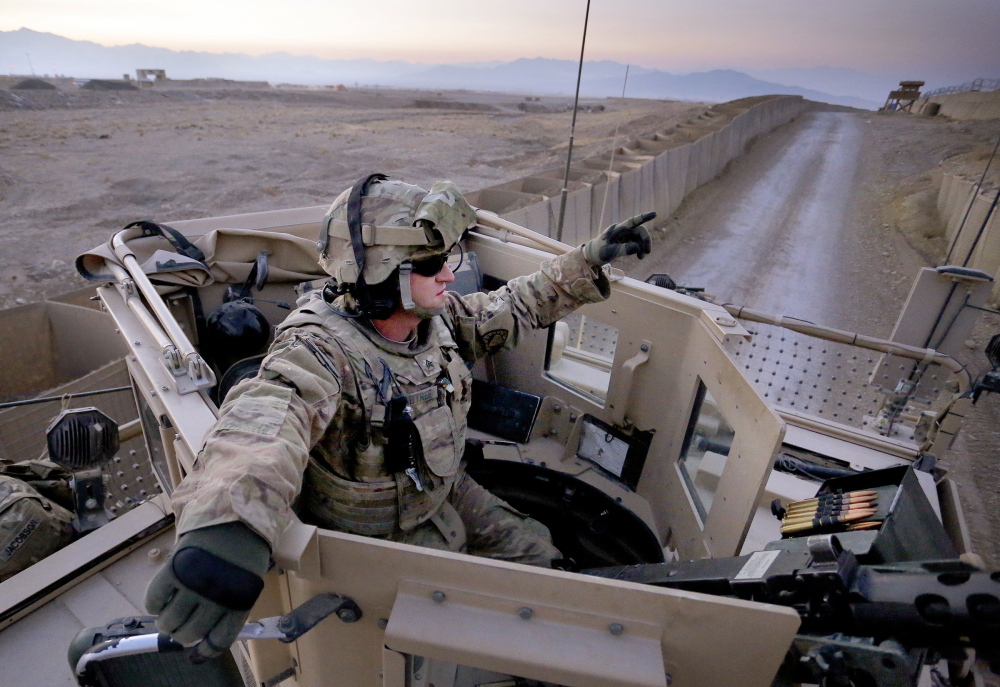
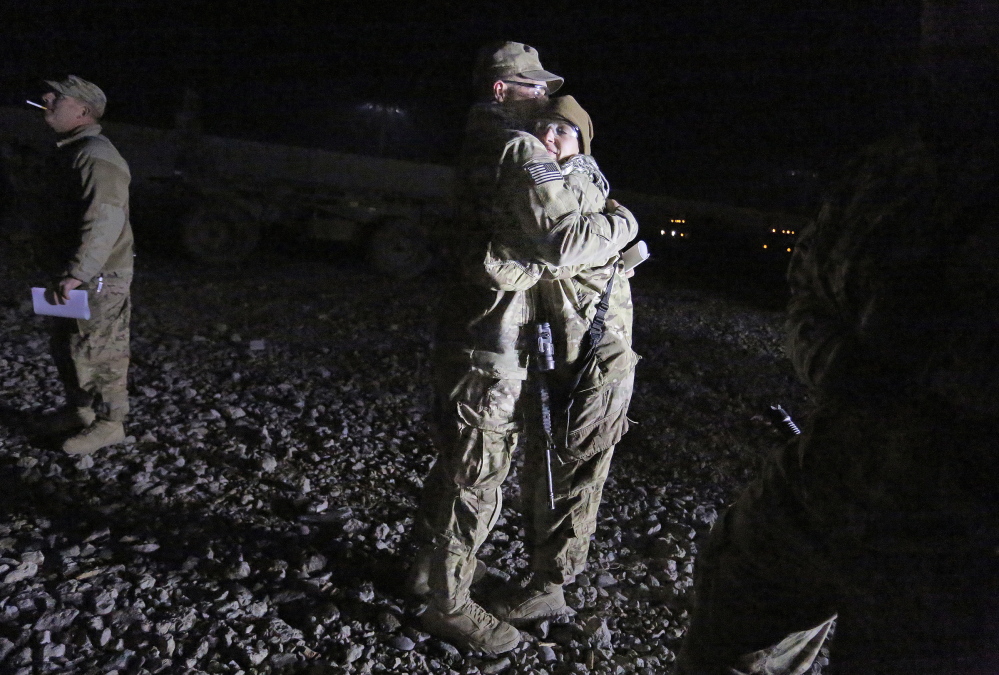
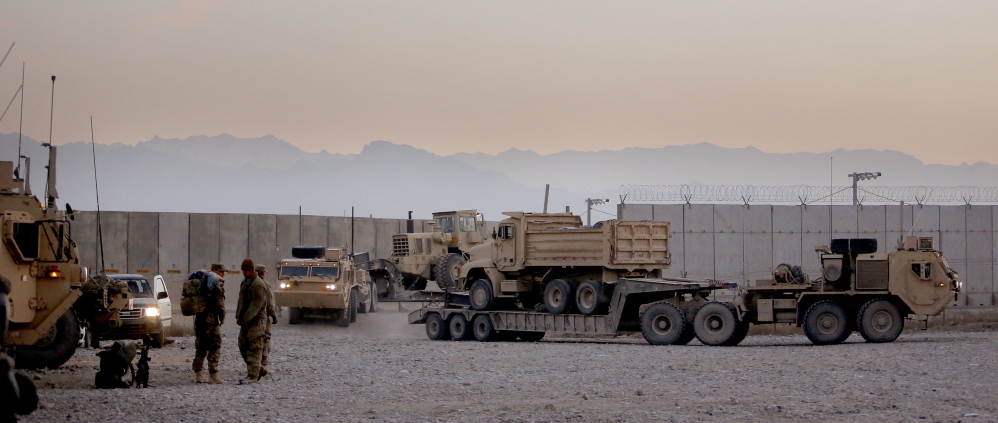
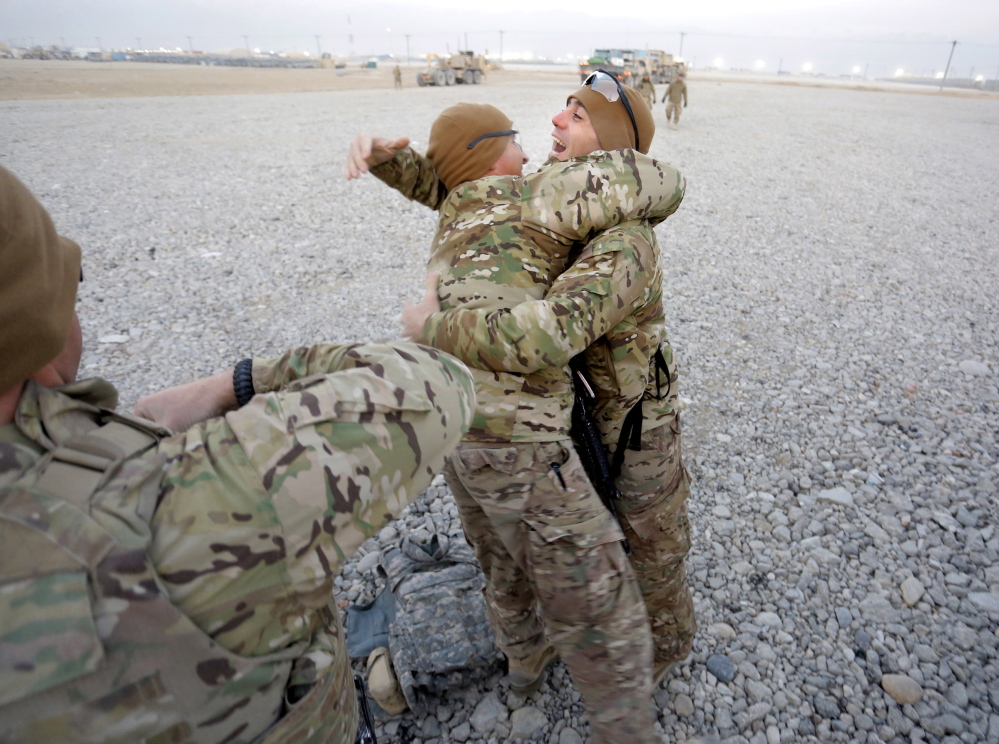
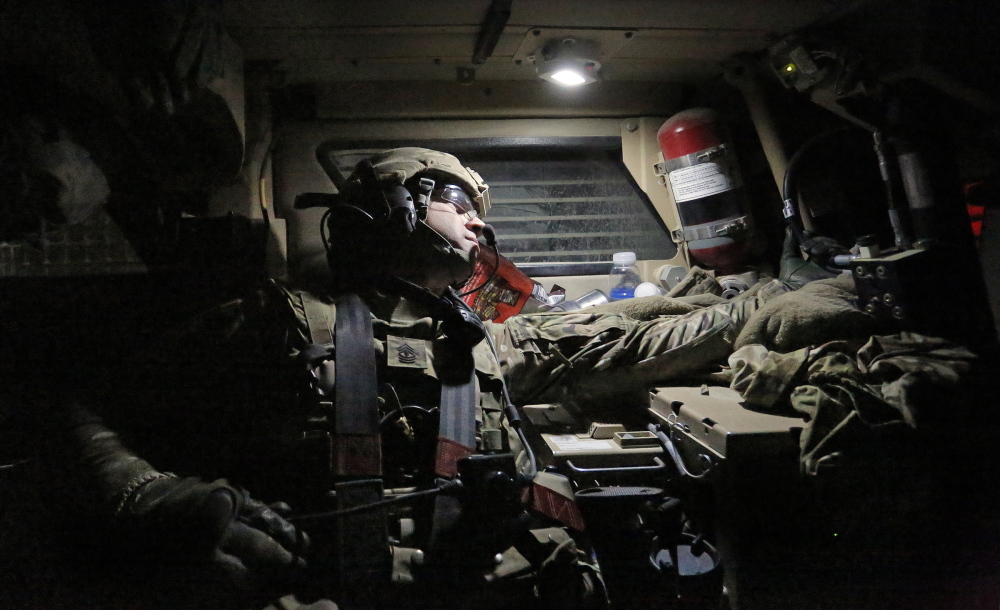
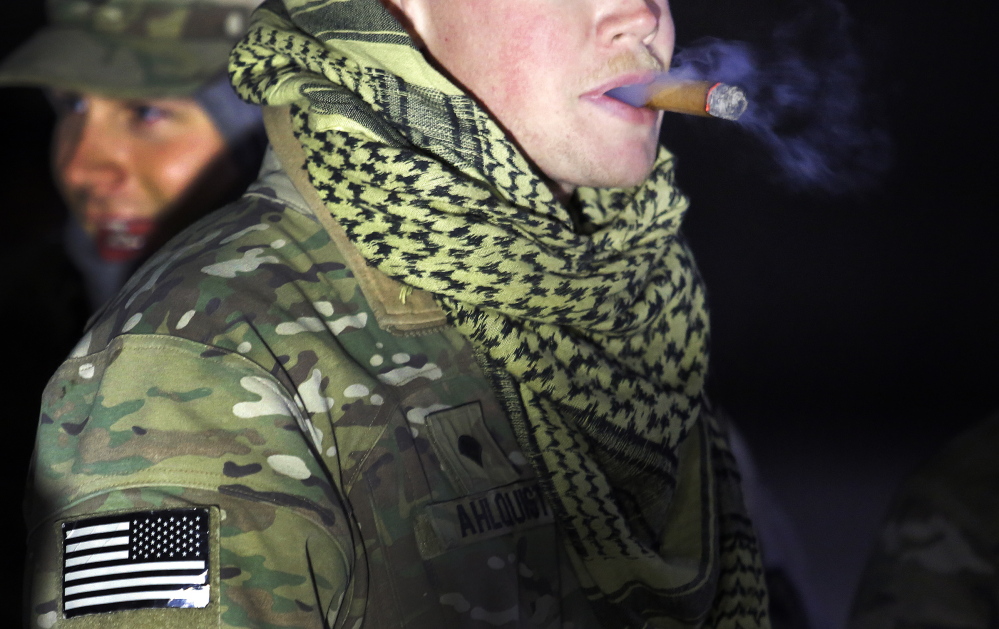

Success. Please wait for the page to reload. If the page does not reload within 5 seconds, please refresh the page.
Enter your email and password to access comments.
Hi, to comment on stories you must . This profile is in addition to your subscription and website login.
Already have a commenting profile? .
Invalid username/password.
Please check your email to confirm and complete your registration.
Only subscribers are eligible to post comments. Please subscribe or login first for digital access. Here’s why.
Use the form below to reset your password. When you've submitted your account email, we will send an email with a reset code.